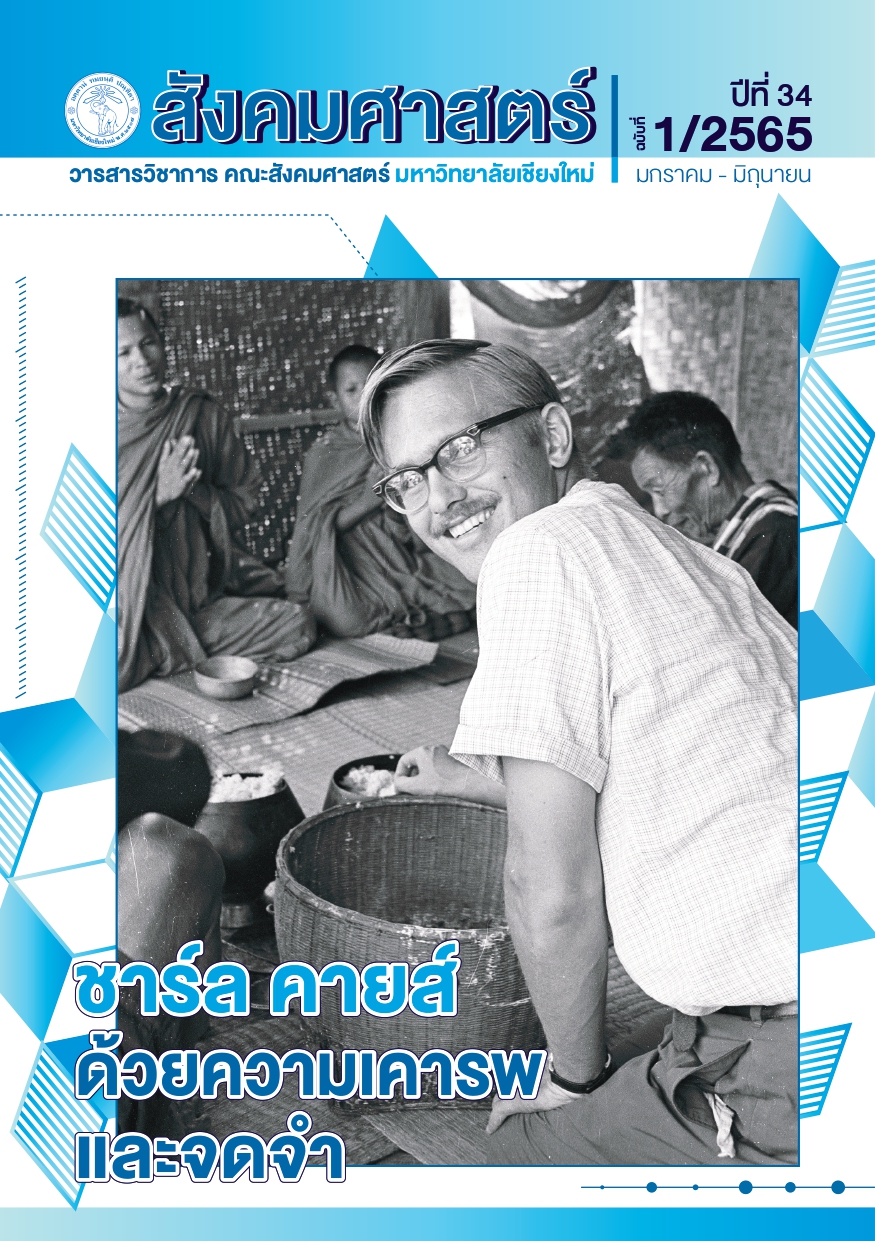เมือง เมืองเชิงซ้อน กายานครซ่อนตัวตน
Main Article Content
บทคัดย่อ
“ชีวิตในระดับจิตใต้สำนึก” คือมโนทัศน์ที่มีความสำคัญต่อการทำความเข้าใจเมืองสมัยใหม่หรือแม้แต่เมืองหลังสมัยใหม่อันเป็นผลผลิตของระบบทุนนิยมในระดับโลกที่เกรี้ยวกราด จวบจนปัจจุบัน เมืองสมัยใหม่ส่วนใหญ่ถูกมองว่าเป็นผลผลิตของพลังพลวัตด้านนิเวศ เศรษฐกิจ การเมือง วัฒนธรรมและเทคโนโลยีของโลกสมัยใหม่ แนวโน้มคำอธิบายเหล่านี้ฟังดูมีเหตุผลในเชิงวิชาการ แต่ความคิดทำนองนี้บางทีก็ควรได้รับการพิจารณาใหม่จากมุมมองอื่นบ้าง บทความชิ้นนี้จะเน้นย้ำว่าที่ผ่านมาเรื่องใหญ่เรื่องหนึ่ง ซึ่งก็คือชีวิตในระดับจิตใต้สำนึกของเมืองได้ถูกมองข้ามมาเป็นเวลาเนิ่นนานในแวดวงการศึกษาเมือง นอกเหนือไปจากประเด็นเรื่อง ความสมดุลทางนิเวศวิทยา ความขัดแย้งทางชนชั้น โลกาภิวัตน์และการเป็นสังคมดิจิทัลแล้ว เรายังควรหยิบยกเอาประเด็นเรื่องชีวิตในระดับจิตใต้สำนึกของเมืองซึ่งเป็นองค์ประกอบที่สำคัญมากอันหนึ่งของเมืองสมัยใหม่ขึ้นมาพิจารณาด้วย
Article Details

This work is licensed under a Creative Commons Attribution-NonCommercial-NoDerivatives 4.0 International License.
ข้อเขียนทั้งหมดทีปรากฏในวารสารสังคมศาสตร์ เป็นความคิดเห็นของผู้เขียนโดยเฉพาะ มิใช่ทัศนคติของคณะสังคมศาสตร์ มหาวิทยาลัยเชียงใหม่ หรือกองบรรณาธิการวารสารสังคมศาสตร์
References
ดวงจันทร์ อาภาวัชรุตม์ เจริญเมือง. 2541. เมืองและการผังเมืองในประเทศไทย กรณีเมืองเชียงใหม่. เชียงใหม่: ศูนย์ศึกษาปัญหาเมืองเชียงใหม่และกลุ่มมังราย.
Albrow, Martin. 1997. “Travelling Beyond Local Cultures: Socioscapes in a Global City”. In John Eade (ed.), Living the Global City: Globalization as a Global Process, pp. 37-55. London: Routledge.
Barker, Chris. 2000. Cultural Studies: Theory and Practice. London: Sage.
Castells, Manuel. 1989. The Informational City: Information Technology, Economic Restructuring and the Urban Regional Process. Oxford: Blackwell.
Castells, Manuel. 1996. The Rise of the Network Society. Oxford: Blackwell.
Cousins, Albert N. and Hans Nagpaul. 1979. Urban Life: The Sociology of Cities and Urban Society. New York: John Wiley and Sons.
Eck, Diana L. 1987. The City as a Sacred Center. In Bardwell Smith and Holly Baker Reynolds (ed.), The City as a Sacred Center, pp. 1-11. Leiden: E. J. Brill.
Flanagal, William. G. 1990. Urban Sociology: Images and Structure. Boston: Allyn and Bacon.
Flanagal, William. G. 1993. Contemporary Urban Sociology. Cambridge: Cambridge University Press.
Graham, Stephen and Simon Marvin. 1996. Telecommunications and the City: Electronic Spaces, Urban Places. London: Routledge.
Harvey, David. 1990. The Condition of Postmodernity. Oxford: Blackwell.
Harvey, David. 2013. Rebel Cities: From the Right to the City to the Urban Revolution. London: Verso.
Lefebvre, Henri. 1996. Writing on City. Malden: Blackwell.
Lefebvre, Henri. 2004. Rhythmanalysis: Space, Time and Everyday Life. London: continuum.
Laguerre, Michel S. 2005. The Digital City: The American Metropolis and Information Technology. London: Palgrave Macmillan.
Legates, Richard T. and Ferderic Stout. 1996. (ed.), The City Reader. London: Routledge.
Miles, Steven and Malcolm Miles. 2004. Consuming Cities. New York: Palgrave Macmillan.
Mumford, Lewis. 1996. “What is a City” In Richard T. Legates and Frederic Stout (ed.), The City Reader. London: Routledge.
Pile, Steve. 1996. The Body and the City: Psychoanalysis, Space and Subjectivity. London: Routledge.
Sassen, Saskia. 2017. The Global City: New York, London, Tokyo. Princeton: Princeton University Press.
Sassen, Saskia. 2017. A Sociology of Globalization. New York: Norton.
Schirato, Tony and Jen Webb. 2003. Understanding Globalization. London: Sage.
Short, John Rennie and Yeong-Hyun Kim. 1999. Globalization and the City. New York: Longman.
Smith, Michael Peter. 2001. Transnational Urbanism: Locating Globalization. Oxford: Blackwell.
Soja, Edward W. 2002. Postmetropolis: Critical Studies of Cities and Regions. Oxford: Blackwell
Sudjic, Deyan. 2017. The language of Cities. London: Penguin Books.
Wirth, Louis. 1996. “Urbanism as a Way of Life” In Richard T. Legates and Frederic Stout (ed.), The City Reader. London: Routledge.

